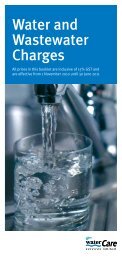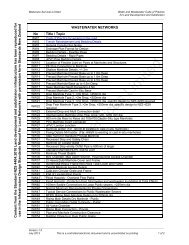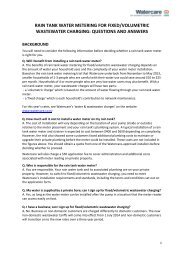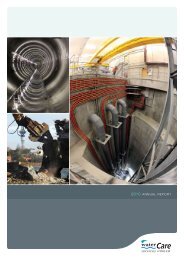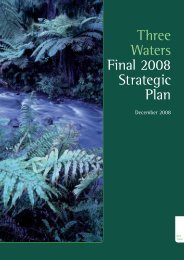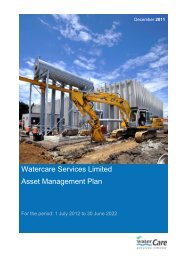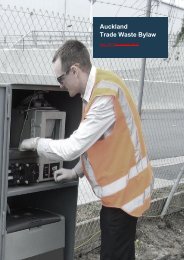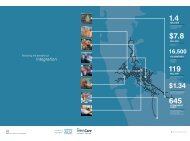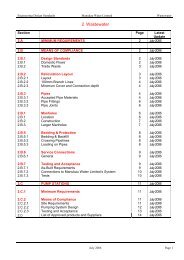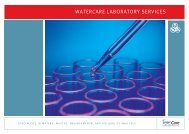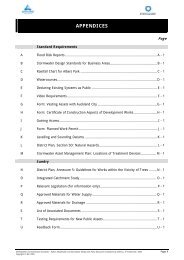Annual Report 2011 - Watercare
Annual Report 2011 - Watercare
Annual Report 2011 - Watercare
You also want an ePaper? Increase the reach of your titles
YUMPU automatically turns print PDFs into web optimized ePapers that Google loves.
<strong>Watercare</strong> Services Limited<br />
<strong>2011</strong> ANNUAL REPORT<br />
<strong>Watercare</strong><br />
at work<br />
Zero Waste<br />
Employees have reduced the volume of refuse they send to<br />
landfill by two-thirds since <strong>Watercare</strong> introduced its Zero<br />
Waste programme in 2003.<br />
Security Manager Alan Foubister, who chairs the Zero Waste<br />
Committee, says currently the volume of refuse produced by<br />
each staff member each week is only 0.5 kilograms on average<br />
– compared with 1.5 kilograms in 2003.<br />
“Our approach has been one of continuous improvement since<br />
inception,” explains Alan. “Along the way we have made gains<br />
through the introduction of such initiatives as worm farms and<br />
colour-coded recycling and rubbish bins.”<br />
For Alan and the committee, the challenge over the past 10<br />
months has been to roll the programme out across a much<br />
larger organisation.<br />
and wastewater services direct to over one million people in<br />
Auckland,” says Alan.<br />
“From the committee’s perspective, our focus has been to keep<br />
Zero Waste in the spotlight – to make sure the recycling and<br />
worm farm initiatives become routine in the new offices.<br />
“To date, feedback from new staff is that they are keen to<br />
participate in and grow the programme. As with anything, there<br />
is room for improvement, but we’re off to a good start.”<br />
“Our approach has been one of<br />
continuous improvement since inception.”<br />
“In November 2010, <strong>Watercare</strong>’s staff and office base grew<br />
significantly when it became responsible for retailing water<br />
Security Manager Alan Foubister checks the health<br />
of the worm farm at head office in Newmarket.<br />
Weblinks<br />
Protected areas of high ecological value Fig. 46<br />
Significant biodiversity impacts Fig. 47<br />
Midge and odour complaints Fig. 48<br />
Trade waste customers Fig. 49<br />
Trade waste sampling programme Fig. 50<br />
Key trade waste substances Fig. 51<br />
Materials and chemicals Fig. 52<br />
Sustainable environment<br />
PAGE 49<br />
Return to Contents page




